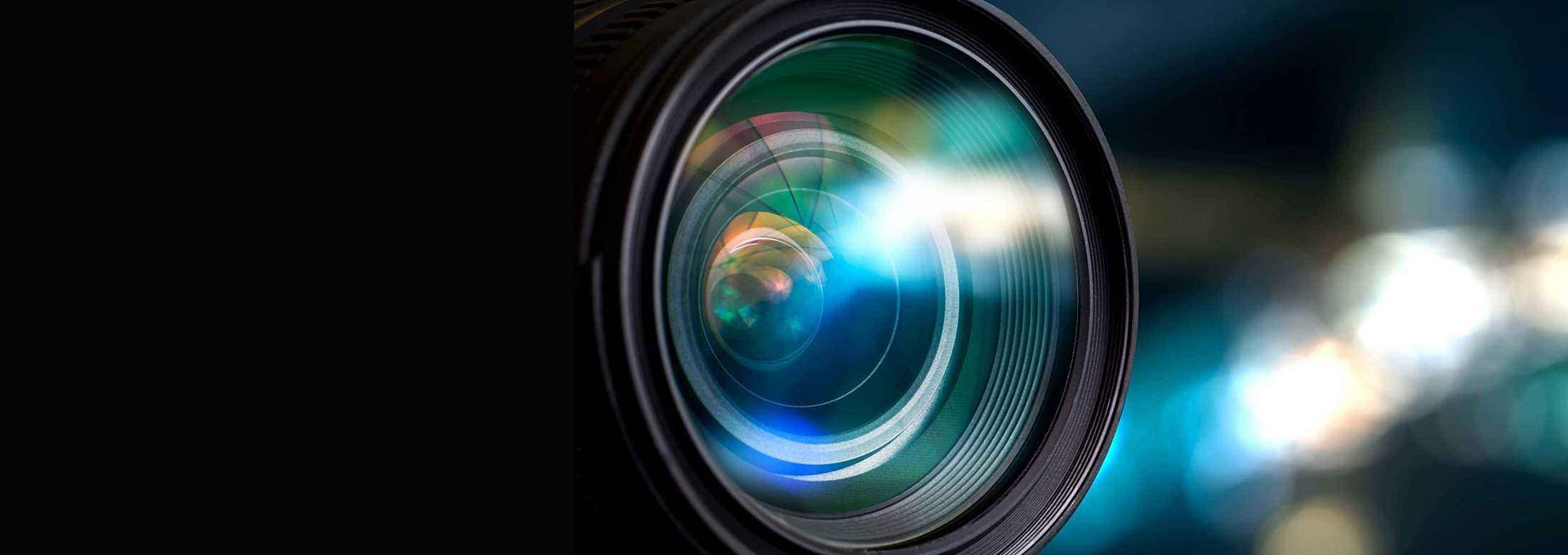Frequently asked questions
Image Sizes
There are several types of imaging sensors with different image sizes for CCTV cameras, the aspect ratio of CCTV camera is normally 4:3 (H:V). The size of camera’s imaging sensor affects the angle of view, with the smaller sensors creating narrower angles of view when used on the same lens. The format of the lens, however is not related to the angle of view, it merely needs to project an image which will cover the sensor, i.e., the same format of the camera or large. This also means that 1/3” cameras can use the entire range of lenses from 1/3” to 1”, for example, a 1/3” 12mm lens gives the same angle of view as a 2/3” 12mm lens does. The latter combination also provides increased resolution and picture quality as only the centre of the lens is being used, where the optics can be ground more accurately.
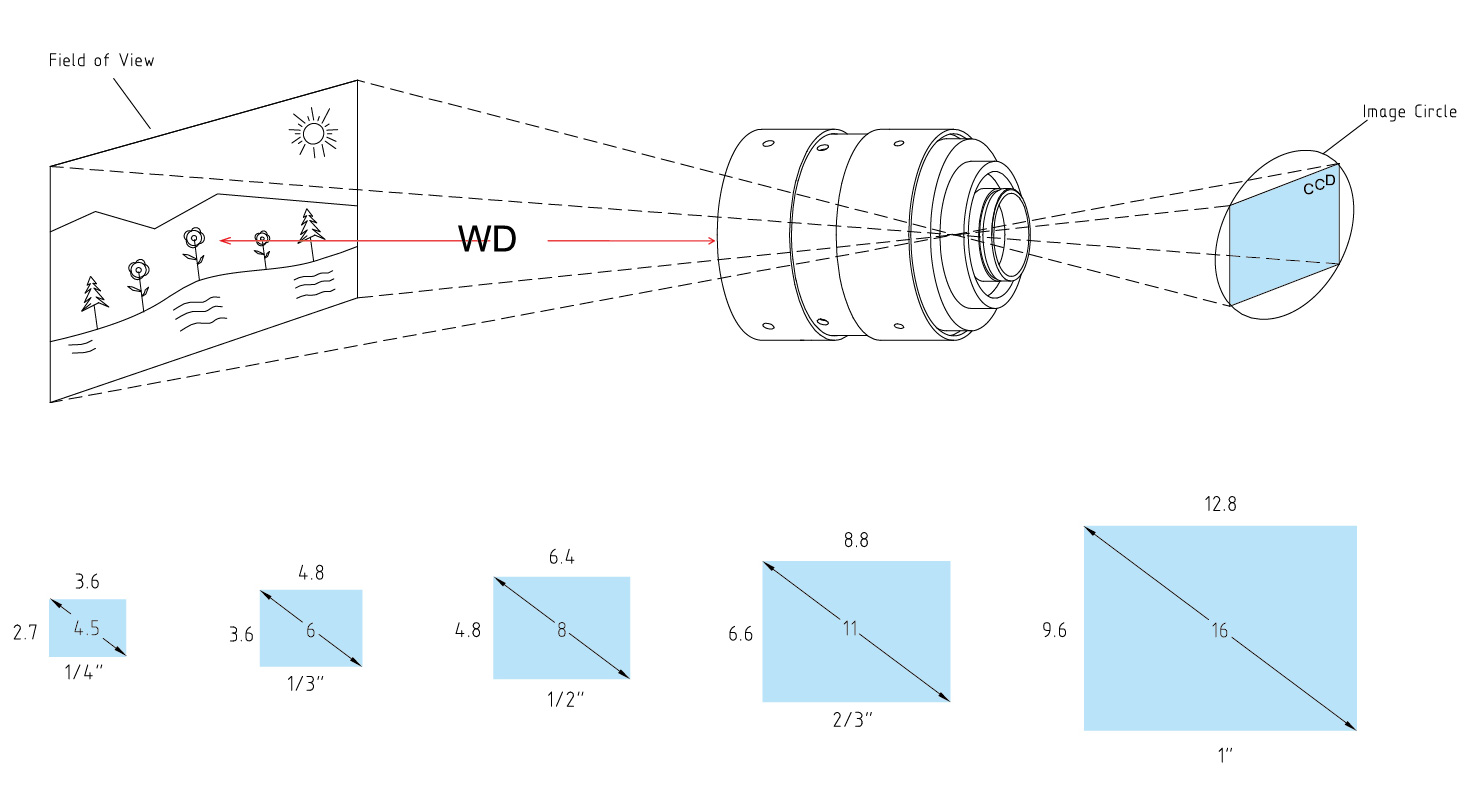
Focal Length
Rays from infinite distance objects are condensed internally in the lens at a common point on the optical axis. The point at which the image sensor of the CCTV camera is positioned, is called a focal point. By virtue of design, lenses have 2 principal points, a primary principal point & a secondary principal point, the distance between the secondary principal point and the focal point (image sensor) determines the focal length of the lens.
The focal length of a lens is measured in mm and directly relates to the angle of view that will be achieved. Short focal length provides wide angle of view and long focal length becomes telephoto, with narrow angle of view.
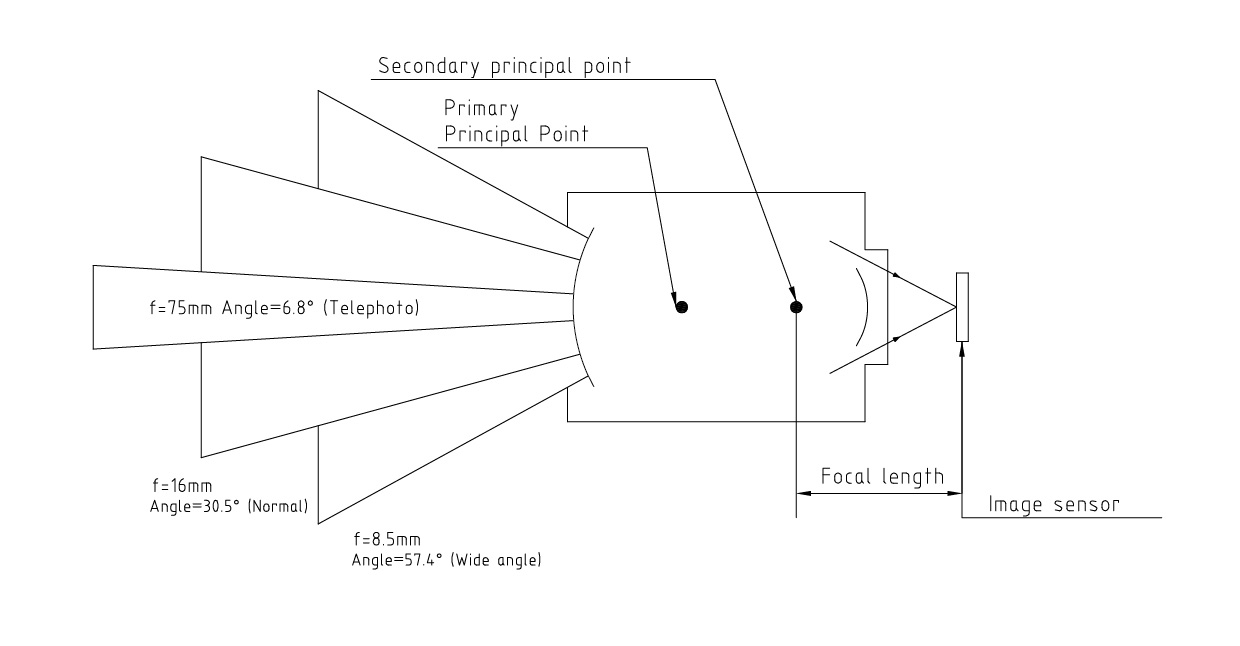
Angle of View
The angle formed by the 2 lines from the secondary principal point to the edges or corners of image sensor is called the angle of view. Theoretically, the focal length of a lens is fixed regardless of the image size of the CCTV camera. Conversely, the angle of view varies according to the change of image size. For a certain image size, the angle of view will increase when the focal length becomes shorter. The focal lengths in the catalog are nominal and the angles of view calculated by the formula referring to the focal lengths are approximate.
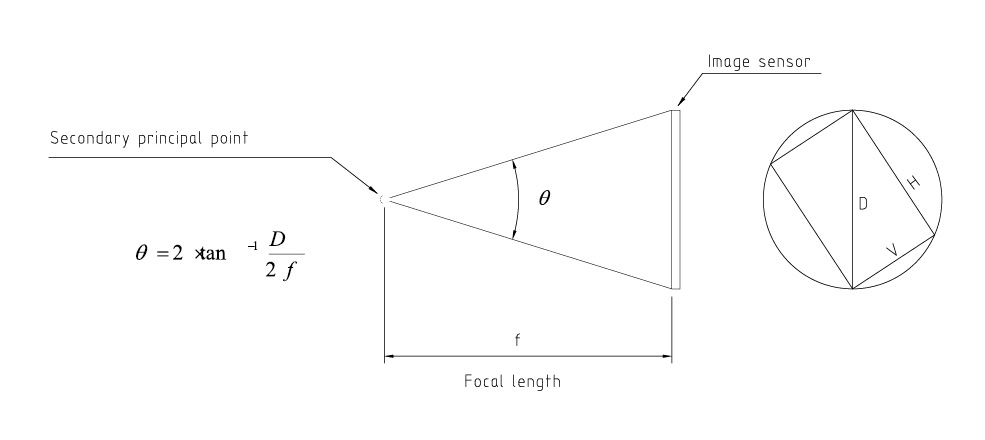
Aperture Ratio (F No.)
Aperture is an index for the amount of light that passes through a lens. The value of the aperture is represented by the F No., the smaller the number, the greater the amount of light, and the brighter the image generated by the lens. The F No. is inversely proportional to the entrance pupil diameter of the lens and directly proportional to the focal length. Its formula is as follows:F No. = f / D (f: focal length, D = Entrance pupil diameter)
Auto Iris and Manual Iris
There are three types of operation for lens iris, that is, (1) DC drive auto iris; (2) Video drive auto iris and, (3) Manual iris. For DC drive type, the iris is controlled by the circuit inside the camera; for Video drive type, the iris is equipped with an amplifier inside and is operated by the Video signal and DC power supply from the camera; for Manual type, the iris is manually adjusted over the adjusting ring on the lens.
Depth of Field
The depth of field refers to the area within the field of view which is in focus. A large depth of field means that a large percentage of the field of view is in focus. A small depth of field means only a small section of the field of view is in focus. The depth of field is of following properties.
1)The larger the F No. is, the wider the depth of field becomes.
2)The shorter the focal length is, the wider the depth of field becomes.
3)The longer the distance to the object is, the wider the depth of field becomes.
4)The backward depth of field is wider than the forward depth of field.
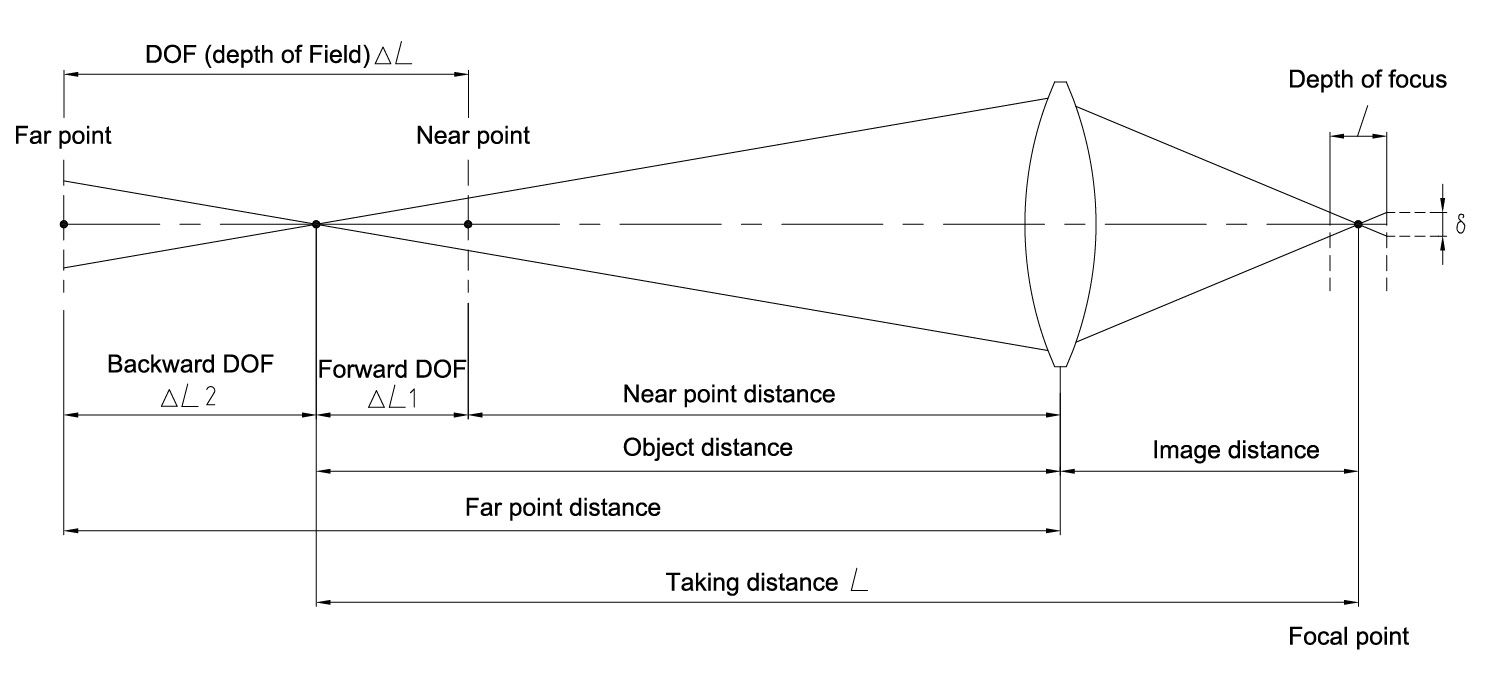
M.O.D.
The M.O.D. (minimum object distance) is the closest distance from the vertex of the front lens to the nearest object at which an image can be focused.
CS and C Mount
The CS-mount lens has the flange back distance of 12.5mm. The C-mount lens has the flange distance of 17.5mm. The CS mount lens is only applicable to the CS mount camera, but the C mount lens is fit for both C mount and CS mount cameras as long as a 5mm Adapter Ring is used to match the CS mount camera.
Flange Back Distance, Back Focal Length, Mechanical Back Focal Length
Flange back distance is the distance between the lens flange and the sensor focal plane.
Back focal length is the distance between the vertex of the rear lens element and the sensor focal plane.
Mechanical Back Focal Length is the distance between the surface of the lens frame and the sensor focal plane.

Non IR Lens vs IR Lens
Day & Night cameras are normally used in near-infrared (NIR) or infrared (IR) at night. If we use a Non IR lens with a day & night camera, the image will be out of focus (shifting) at night. Our special optical designs with broad band co-focusing technology based on special glass material minimize light dispersion. As a result, refocusing is not required when the camera is used under NIR or IR. The special design makes the lens to deliver perfect focusing either under visible light or under IR illumination circumstances.

Megapixel
CCD and CMOS image sensors use a series of pixels arranged on a 2 dimensional grid. These pixels convert an optical image to an electronic signal. The number of pixels in an image usually defines the resolution, more pixels means higher resolutions. A megapixel is defined as one million pixels, while camera with a megapixel sensor is called a megapixel camera.
CONTACT FORM

-
HQ: Xiamen Leading Optics Co., Ltd. Address:No.26 Xinmei Road, Haicang Xinyang Industry District, Xiamen, 361022, China Tel:+86-592-313-6623
Mobile:13959211601
Fax:+86-592-313- 7588
E-mail:sales@evetar.com Zhangzhou and Jiangxi Tel:+86-592-313-6623E-mail:sales@evetar.com Taiwan Tel:+86-592-313-6623E-mail:sales@evetar.com

- US Branch:EVETAR USA INC. Tel:+1-925-428-4740 E-mail:elvis.li@evetar.com Frankfurt Tel:+86-592-313-6623E-mail:sales@evetar.com

